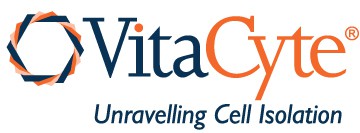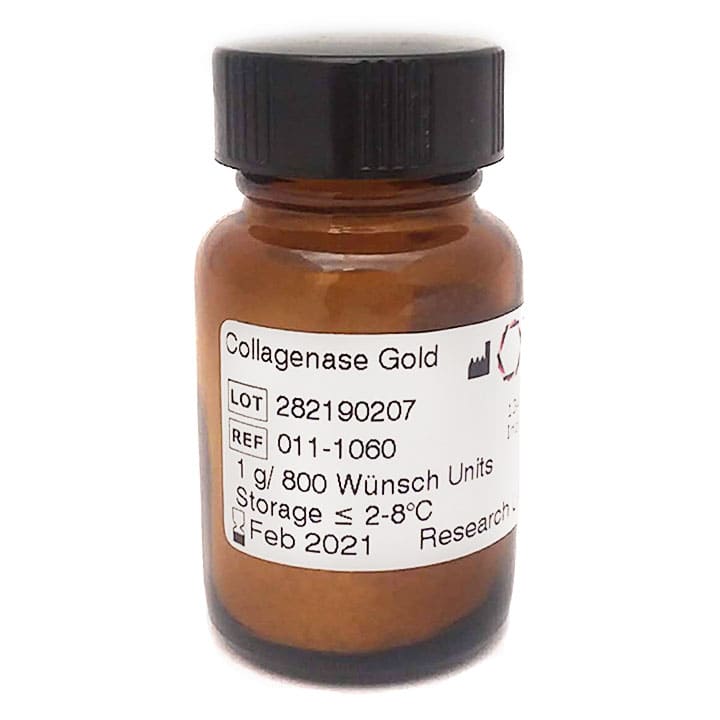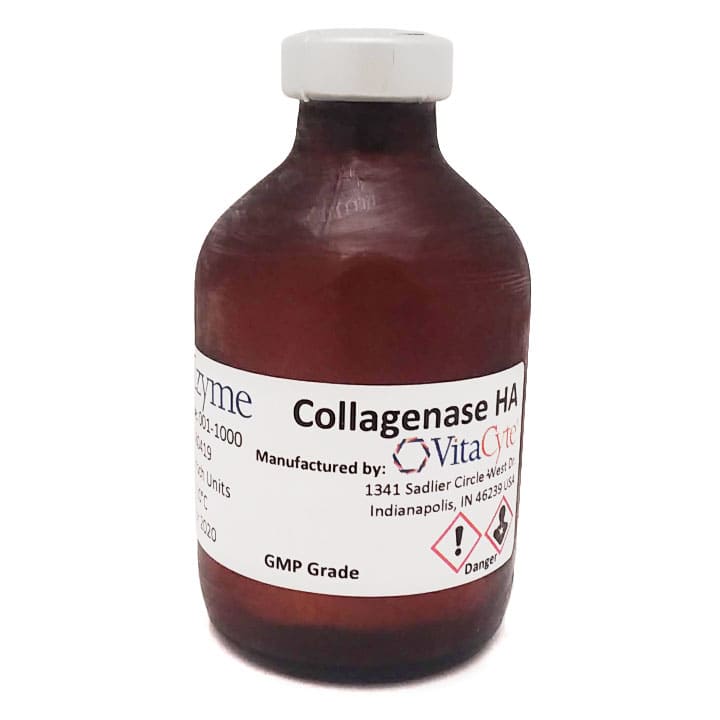Human Islet ApplicationsRecommended Products
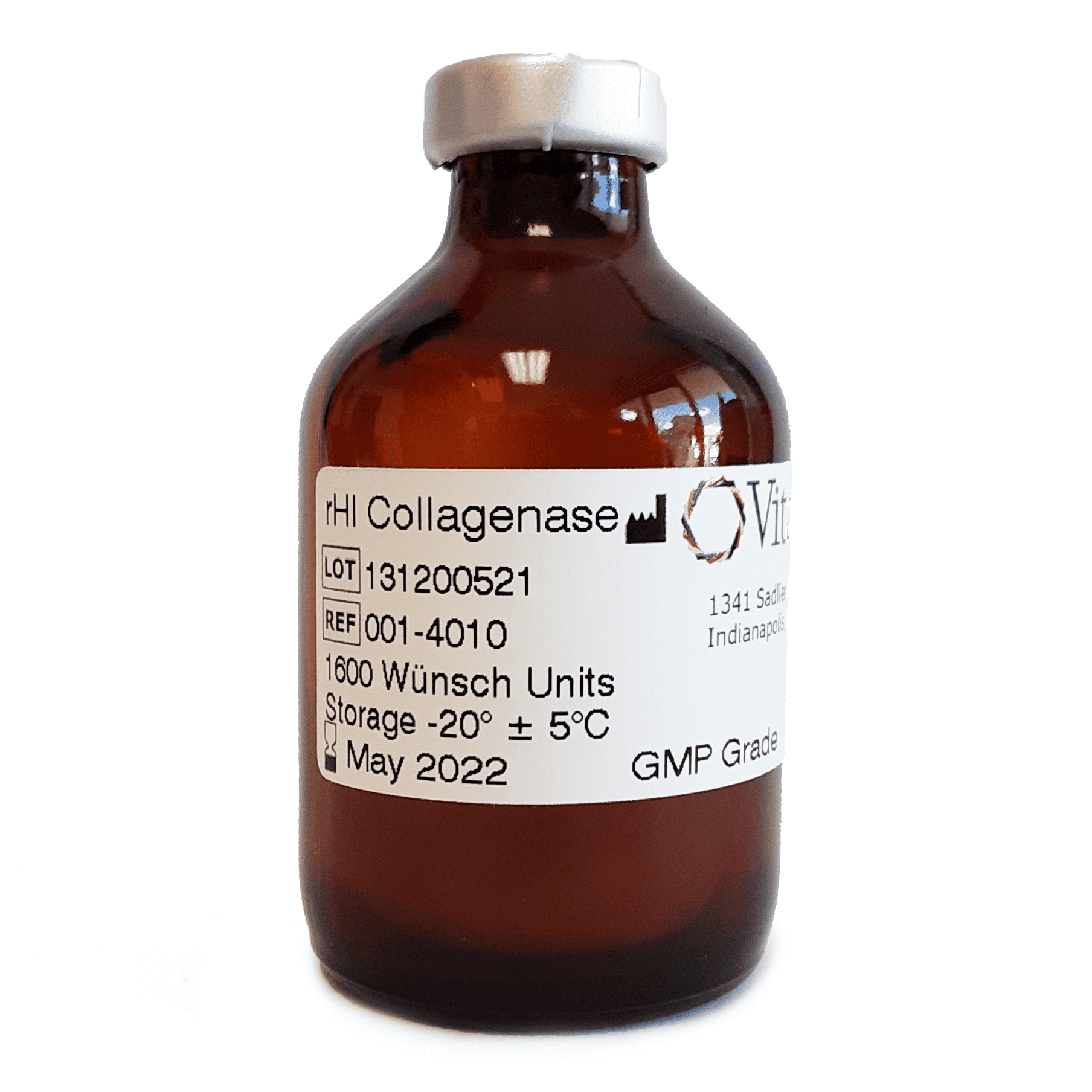
rCollagenase HI
Cat # 001-4010
1 bottle
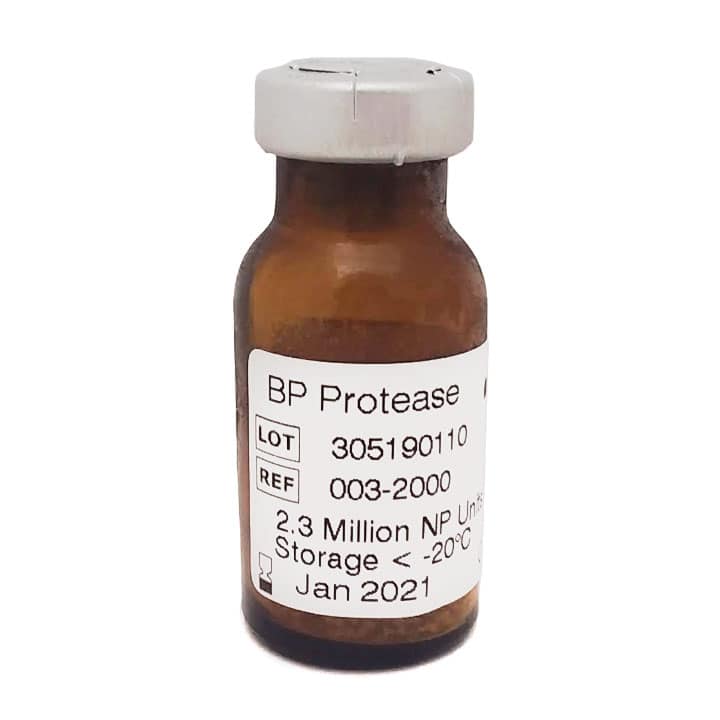
BP Protease
Cat # 003-2000
1 bottle
The products recommended above are designed to have sufficient activity to digest 1 average size trimmed human pancreas (80-100 g) when diluted to 350 mL in working buffer. Many centers dose the collagenase and protease to per gram of tissue. Some reported successful enzyme doses are captured in the Successful Reported Formulations table below.
Modified Ricordi ProcedureRecommended Method
Nearly all human islet isolation methods are modified versions of the Ricordi procedure.(2) The modified Ricordi method was adopted by the CITCT, a group funded by NIH to perform several different clinical trials designed to assess benefits of islet transplantation for management of adult, type I diabetes patients. The master batch production records that document the protocols used to isolate human islets in the CITCTs can be found in CellR4 online journal. Look for reports by Ansite JD, et al in volume and issue numbers 2(3), 3(1), 4(2)(3), 5(2)(3).
The majority of protocols use about > 2000 Wunsch Units (WU) per pancreas or about 20 WU/g tissue.(3) The neutral protease activity can vary depending on the protocol and neutral protease used in the procedure. Consult the CITCT protocols above for more details.
VitaCyte’s purified-defined collagenase and protease products have been used by many different laboratories to isolate human islets. A table of Human Islet Yields: Comparison Between Commercial Enzyme Suppliers is available.
Expected Cell Yield
As a reference value for a research human islet isolation, the expectation is to recover > 3500 islet equivalents (IEQ) per g of trimmed tissue with an islet purity > 70%. If your goal is to isolate a high purity islet population for use in diabetes research then this number is about > 3000 IEQ per g tissue.
Perspectives
Many different factors may influence human islet yield or function. The outcome is affected by the quality of the organ, the expertise of the islet isolation team, and the selection of the enzyme supplier and dose used in the procedures. The boxes below summarizes some of the factors discussed in the scientific literature to consider when your focus is on the enzymes used in the isolation procedure.
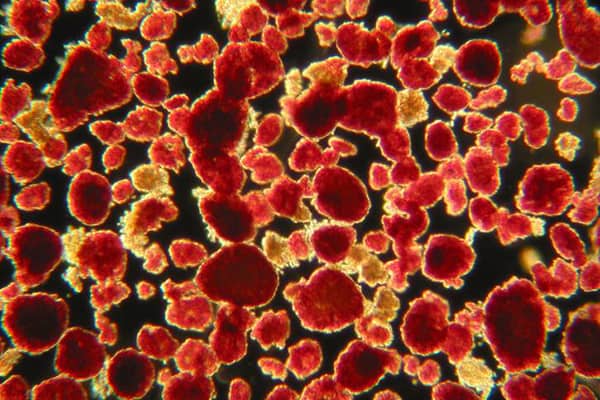
Successful Reported Formulations
Data below summarizes results from publications that used VitaCyte’s Collagenase HA, Collagenase Gold, and rCollagenase HI in enzyme mixtures that also contained either C. histolyticum neutral protease (CHNP) or BP Protease (a Dispase™ equivalent enzyme). These data also include islet isolation results from isolations that used PD Collagenase 800 (formerly known as DE Collagenase 800). The dose of collagenase in Wunsch Units (WU) varies depending on the product and the protocol followed for the isolation procedure. The recommended amount of BP Protease used for human islet isolation is 23,400 of VitaCyte’s neutral protease units (NP U) per g of trimmed tissue.
Collagenase HA + Protease4,5
Collagenase HA
Cat # 001-1000
18 – 20 Wünsch U/g tissue
NB Protease
(Nordmark)
1.25 – 1.50 DMC U/g tissue
Collagenase HA
Cat # 001-1000
20 Wünsch U/g tissue
BP Protease
Cat # 003-1000
23,400 NPU/g tissue
Collagenase HA
Cat # 001-1000
12 Wünsch U/g tissue
BP Protease
Cat # 003-1000
23,400 NPU/g tissue
rCollagenase HI + Protease5,6
rCollagenase HI
Cat # 001-4010
20 Wünsch U/g tissue
BP Protease
Cat # 003-1000
23,400 NPU/g tissue
rCollagenase HI
Cat # 001-4010
12 Wünsch U/g tissue
BP Protease
Cat # 003-1000
23,400 NPU/g tissue
rCollagenase HI
Cat # 001-4010
16 Wünsch U/g tissue
BP Protease
Cat # 003-1000
23,400 NPU/g tissue
Collagenase Gold + Protease7,8
Collagenase Gold
Cat # 011-1060
9.9±0.6 Wünsch U/g tissue
(12.8±0.8 FALGPA U/g tissue)
BP Protease
Cat # 003-1000
28,700 NPU/g tissue
Collagenase Gold
Cat # 011-1060
1 gram bottle/organ
BP Protease
Cat # 003-1000
28,700 NPU/g tissue
PD Collagenase 8008
PD Collagenase 800
Cat # 011-3020
10 Wünsch U/g tissue
Protease is included in formulation.
DE Collagenase is now sold as PD Collagenase.
Factors to Consider When Focusing on Enzymes Used in Isolation Procedures
It is critical to use intact class I (C1) and class II (C2) C. histolyticum collagenase to ensure maximum islet recovery.
- Most reports show that higher human islet yields obtained when using intact C1 & C2 collagenase that have the highest collagen degradation activities- CDAs(3, 4, 9, 10)
- Wunsch activity reflects ability of C2 catalytic domain to cut a collagen specific peptide, no correlation to collagenase’s CDA
- Enzyme acceptance criteria should be set for qualifying enzymes for use in human islet isolation procedures(11) since the cost per isolation can be ≥ $10,000 USD
- US Pharmacopeia has published monographs on an analytical anion exchange chromatography procedure and Wunsch assay to assess C. histolyticum collagenase(12)
- Recommend including an accurate measure of CDA using a reliable assay in an enzyme analysis(3)
C1 and C2 ratio does not appear to affect the ability of collagenase to recover islets.
- Design of experiment study using different doses of C1 and C2 recombinant collagenase found that when C1:C2 ratios ranged from 27:73, 38:62, 43:57, 55:45, no difference in islet yields(1)
- Data above shows similar islet yields obtained when using Collagenase HA or Collagenase Gold that had C1:C2 ratios of 60:40 and 75:25, respectively
- C1 and C2 collagenase work synergistically to degrade native collagen
- Recent studies showed that C1 is a processive protease that “shaves off” a tropocollagen molecule from a collagen fibril or fiber whereas C2 is an endoprotease (13)
- Assessment of different ratios of purified natural C1 and C2 collagenase has shown that a 10:90 C1:C2 ratio was effective as any other C1:C2 mixture in degrading collagen fibrils (14)
The choice and dose of neutral protease used in an islet isolation procedure is a critical variable that must be controlled.
- University of Minnesota evaluated the effectiveness of thermolysin or C. histolyticum neutral protease (CHNP) to recover islets using a split pancreas model
- Results showed that islets recovered using mixtures using CHNP gave significantly higher total islet yields and a significantly more intact islets with diameter ≥200 µm than those isolations using thermolysin(4)
- Model for collagen degradation activity (CDA) proposed that purified collagenase not damaging to cells because of its restricted specificity for collagen, the predominant extracellular matrix (ECM) protein
- For optimal cell release, collagenase CDA must be in excess to loosen the ECM, leading to exposure of protease sensitive sites in ECM proteins
- Selection of neutral protease and dose used in isolation critical for success of the cell isolation procedure(3)
Collagenase's CDA activity is reduced in the presence of other neutral proteases.
- Crude collagenase enzymes lose the ability to recover cells from tissue with increased storage time(15, 16)
- Clostripain, a common contaminate of many purified collagenase products, is effective in degrading C1 collagenase (17), decreasing its CDA and its effectiveness to degrade collagen(3)
- Any protease added to purified collagenase may degrade the collagenase and reduce its CDA
- C1 collagenase appears to be more susceptible to collagen degradation than C2
- Degradation of C1 collagenase detected by analytical anion exchange chromotography (10)
Resources & Reviews
The manufacturing documents used to isolate human islets for the CITCTs can be found in CellR4 online journal as noted above. Human islet isolation workshops are periodically sponsored by the European Pancreas and Islet Transplantation Association, a section of the European Society for Organ Transplantation (esot.org). VitaCyte sponsors a human islet isolation webinar series.
Open Science Links
The protocol for isolation human islet for research at the University of Alberta in Edmonton is described in detail at Protocols.io: https://www.protocols.io/view/isolation-of-human-pancreatic-islets-of-langerhans-bt55nq86?step=7
References
- Balamurugan AN, Green ML, Breite AG, Loganathan G, Wilhelm JJ, Tweed B, et al. Identifying Effective Enzyme Activity Targets for Recombinant Class I and Class II Collagenase for Successful Human Islet Isolation. Transplant Direct. 2016;2(1):e54.
- Ricordi C, Lacy PE, Scharp DW. Automated islet isolation from human pancreas. Diabetes. 1989;38 Suppl 1:140-2.
- McCarthy RC, Green ML, Dwulet FE. Evolution of enzyme requirements for human islet isolation. OBM Transplantation [Internet]. 2018; 2(4):[1-30 pp.]. Available from: http://www.lidsen.com/journals/transplantation/transplantation-02-04-024.
- Balamurugan AN, Loganathan G, Bellin MD, Wilhelm JJ, Harmon J, Anazawa T, et al. A new enzyme mixture to increase the yield and transplant rate of autologous and allogeneic human islet products. Transplant. 2012;93:693-702.
- Loganathan G, Subhashree V, Breite AG, Tucker WW, Narayanan S, Dhanasekaran M, et al. Beneficial effect of recombinant rC1rC2 collagenases on human islet function: Efficacy of low-dose enzymes on pancreas digestion and yield. Amer J Transplant. 2018;18:478-85.
- O’Gorman D, Kin T, Rosichuk S, Richer B, Zhai W, Moriarity J, et al. Evaluation of a low dose recombinant collagenase and BP Protease for clinical islet transplantation. Transplant. 2021; 105:S19-S20. https://journals.lww.com/transplantjournal/Fulltext/2021/12001/306_4__Evaluation_of_a_Low_Dose_Recombinant.30.aspx?context=LatestArticles
- Khiatah B, Tucker A, Chen KT, Perez R, Bilbao S, Valiente L, et al. Evaluation of collagenase gold plus BP protease in isolating islets from human pancreata. Islets. 2018;10:51-9.
- Loganathan G, Hughes M, Szot G, et al. (2019). Low Cost, Enriched Collagenase-Purified Protease Enzyme Mixtures Successfully Used for Human Islet Isolation. OBM Transplantation. 3. 1-1. 10.21926/obm.transplant.1902064
- Human Islet Yields: Comparison between commmercial enzyme suppliers. VitaCyte LLC; 2019 [Available from: Human Islet Yield Comparison – VitaCyte (cloudwaysapps.com).
- Balamurugan AN, Breite AG, Anazawa T, Loganathan G, Wilhelm JJ, Papas KK, et al. Successful human islet isolation and transplantation indicating the importance of class 1 collagenase and collagen degradation activity assay. Transplant. 2010;89:954-61.
- McCarthy RC BA, Green ML, Dwulet FE. Tissue dissociation enzymes for isolating human islets for transplantation: Factors to consider in setting enzyme acceptance criteria. Transplant. 2011;91:137-45.
- U.S. Pharmacopeia. Biological raw and ancillary materials standards 2020 [Available from: https://www.usp.org/biologics/raw-ancillary-materials.
- McCarthy RC, Sakon J. Collagen degradation by Clostridium histolyticum collagenases 2021 [Available from: Collagen Degradation by Clostridial histolyticum Collagenases – VitaCyte (cloudwaysapps.com).
- Breite AG, McCarthy RC, Dwulet FE. Characterization and functional assessment of Clostridium histolyticum class I (C1) collagenases and the synergistic degradation of native collagen in enzyme mixtures containing class II (C2) collagenase. Transplant Proc. 2011;43:3171-5.
- Hefley T, Cushing J, Brand JS. Enzymatic isolation of cells from bone: cytotoxic enzymes of bacterial collagenase. Am J Physiol. 1981;240(5):C234-8.
- Cavanagh TJ, Lakey JR, Wright MJ, Fetterhoff T, Wile K. Crude collagenase loses islet-isolating efficacy regardless of storage conditions. Transplant Proc. 1997;29(4):1942-4.
- Mitchell WM. The contamination of purified collagenase preparations by clostridiopeptidase B (clostripain): the potential effect on studies utilizing collagenase as a highly specific structural tool. John Hopkins Medical J. 1970;127:192-8.
